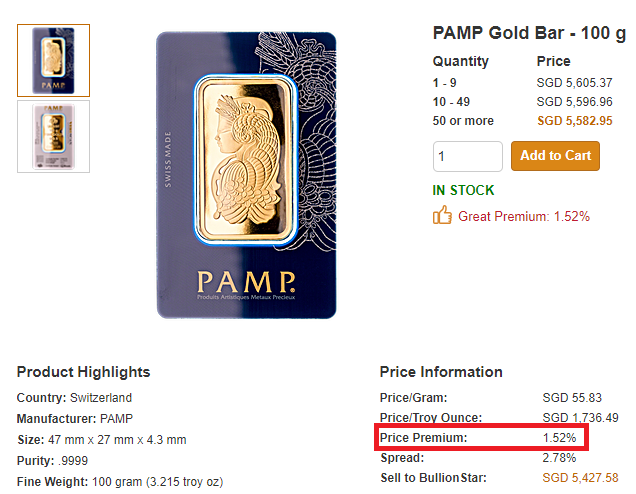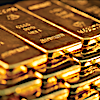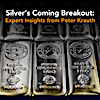How can we help? Ask a question or describe a problem you're having.
-
Buy Gold & Silver from BullionStar
- BullionStar at a Glance
- Learn How to Buy Precious Metals From BullionStar in Four Easy Steps
- Buying Gold & Silver from BullionStar - Detailed Guide
- Payment & Payment Methods
- A Guide to Paying For Your BullionStar Order With Crypto
- Storing & Delivering Precious Metals in the United States
- United States Gold & Silver Bullion Sales Tax
- Buying Gold & Silver For Your IRA Retirement Account
- How BullionStar Ensures Your Privacy & Confidentiality
- Earn Commissions With BullionStar’s Affiliate Program
- Buy Precious Metals from BullionStar in the US – FAQ
- Contact Us
-
BullionStar Account
- How to Set Up a BullionStar Account in Just a Few Seconds
- Adding a Joint Account Holder to Your BullionStar Account
- Keeping Funds on Your BullionStar Account
- How to Fund Your BullionStar Account
- How to Withdraw Funds From Your BullionStar Account
- How to Sell Bullion with the Proceeds Paid to Your BullionStar Account
- Using Two-Factor Authentication (2FA)
- Frequently Asked Questions
- Our Products
-
Vault Storage
- Storing Precious Metals With BullionStar
- Bullion Storage in the United States
- BullionStar's Vault in the United States
- Precious Metals Storage Options
- Direct Legal Ownership
- How We Allocate Bullion in Our Vaults
- Vault Insurance Procedures & Policies
- Bullion Audit Procedures & Policies
- How to Buy Gold & Silver for Vault Storage
- How to Sell Bullion in Vault Storage
- How to Withdraw Bullion from Vault Storage
- Convert/Withdraw BSP Grams
- IT & Account Security Policies & Procedures
- In Case of Death
- Storage Fee Schedule
- Sell To BullionStar
- About BullionStar
- Terms & Conditions
Bullion Price Premiums
Physical gold, silver, and platinum bullion coins and bars typically command higher prices than the spot price for each respective metal — a difference known as the price premium.
There are a number of factors that contribute to bullion price premiums. Natural refining and minting costs including fabrication, marketing, distribution, and insurance costs contribute to the portion of the price premium known as the natural premium.
Another component of the overall bullion price premium is the market premium, which is semi-variable and determined by supply and demand conditions in the physical precious metals market. If demand for a bullion coin or bar increases relative to its supply, its premium will increase and vice versa.

Natural Premium
To better understand natural bullion premiums, it’s helpful to take a closer look at the production costs of physical precious metals products.
Gold, silver, and platinum bullion products are generally minted in weights ranging from 1 gram to 10 kilograms and practically every imaginable weight in between. It is a very costly and sophisticated process to melt, refine, mint, assay and certify physical precious metals products with high precision and quality. Every step in the minting process — from design work to manually engraving stamps — must be factored into the cost of the final product, which is why a 1 oz bar or coin costs more than 1 oz of precious metal that is part of a larger bullion bar.
The natural premium tends to remain fairly stable over time and matches production costs.
In percentage terms, premiums on smaller bullion coins and bars are typically higher than premiums on larger bullion bars. In percentage terms, premiums on silver bullion products are usually higher than premiums on gold bullion products due to the great difference in price between the two precious metals.
How Spot Gold & Silver Prices Are Set By “Paper” Markets
The spot price of gold, silver, and platinum is defined as the current market price at which that particular metal can be bought or sold in significant quantity in the wholesale market for immediate delivery. Throughout the business week, precious metals are quoted and traded continuously on a wholesale basis by market participants from around the world including commodity trading companies and bullion banks. The spot price (also known as the international spot price) of each precious metal is determined by the prices at which those aforementioned wholesale transactions occur. Precious metals spot prices are quoted in U.S. dollars per troy ounce.
International precious metals price discovery is dominated by the most active and influential trading venues, which are the London over-the-counter (OTC) market and the COMEX futures markets in the United States. Smaller, regional precious metals markets around the world generally adhere to international precious metals prices and use them for setting and quoting their own prices. Though most trading on the London OTC and COMEX markets occurs in so-called “paper” instruments rather than in physical precious metals, the physical precious metals industry — including miners, refiners, mints, and wholesalers — are forced to be price takers and accept the spot prices determined in the paper trading venues.
Market Premium
The market premium is the second component of the bullion price premium and is defined as the difference between the spot precious metal price plus the natural premium and the price of physical bullion in the marketplace.
Several factors cause market premiums to rise and fall including:
- Overall supply and demand for physical precious metals
- The supply of blanks used to mint bullion coins
- Production capacity for smaller bullion products
- Mintage quotas for certain bullion products
- Counterparty risk in the “paper” precious metals markets
As confirmation of the points mentioned above, during the 2008 Global Financial Crisis, silver fell under $10 in the spot market, but market premiums on popular 1 oz silver bullion coins soared to an incredible 100%.
Spreads
For bullion products, the spread is defined as the difference between the price at which a particular product can bought versus the price at which that same product can be sold at the same point in time.
Spreads are determined by supply and demand for the bullion product along with the volume of trading in the particular bullion product.
BullionStar is the world’s first precious metals dealer to offer bullion products that don’t have any spread! To learn more, take a look at our 100 Gram BullionStar No-Spread Gold Bullion Bar and 1 Kilogram BullionStar No-Spread Silver Bullion Bar.
For Additional Information:
Storing Precious Metals in BullionStar’s Vaults
How to Purchase Precious Metals From BullionStar
BullionStar No-Spread Gold & Silver Bullion Bars








